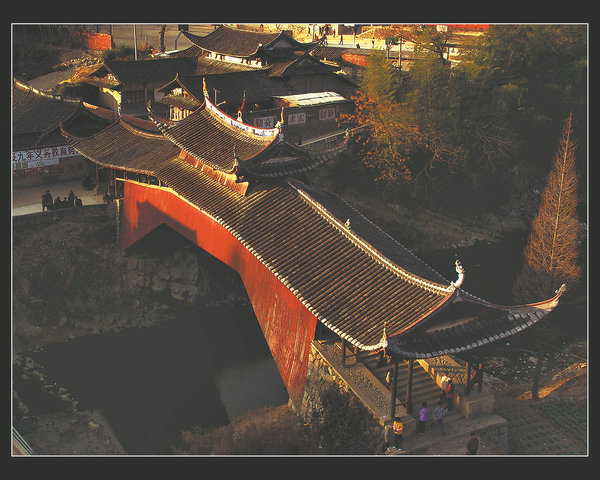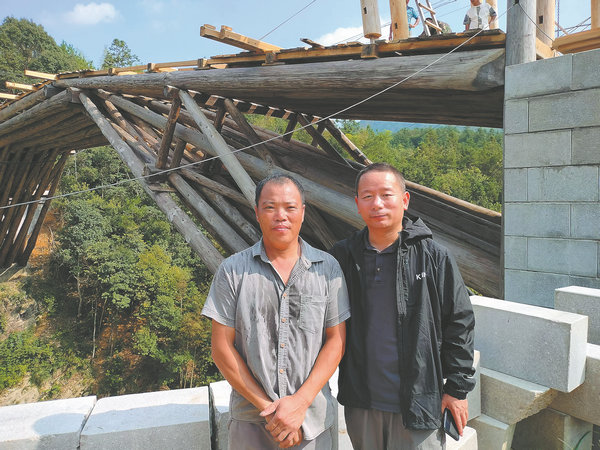

Cultivation of inheritors
Soon after, he set up the Wenzhou Covered Bridge Culture Society and organized seminars. He also encouraged scholars to check on them every year. Thanks to his hard work, wooden arch bridges went from being nestled in deep mountains to becoming known to the world.
"Over the past two decades, Zhong has devoted a significant part of his spare time to protecting the bridges. … His stories reveal that these structures are not merely about transportation but are vessels of culture and testimonies of history. They are invaluable treasures; and the duty of preserving them and promoting their cultural significance should be embraced by every individual," says Wang Jianghui, a student at the Zhejiang University of Finance and Economics who participated in one of Zhong's activities last year.
As a result of the publicity, Zhong says awareness of protecting the bridges has improved greatly. "In the past, they were left without protection and often had to give way to development. But now we have teams of volunteers and devices to monitor threats and take measures to eradicate them."
He has also seen the growing number of bridge makers, who help ensure their continued existence.
Since Dong and a few other elderly craftspeople were found, the local government has adopted measures, like subsidies for constructing bridges using traditional skills, to encourage the use and spread of the craft.
"Now, the number of new wooden arch bridges in some parts of southern Zhejiang and northern Fujian exceeds the old, a positive trend in development. Given that just two decades ago they were endangered, we can confidently say that the situation has undergone a welcome transformation," Zhong says.
According to official documentation about the craft on the UNESCO website, when it was inscribed on the Intangible Cultural Heritage in Need of Urgent Safeguarding list in 2009, there were only four people with mastery of the core techniques, all over 75. Now there are more than 40 representative inheritors, aged 56 on average.
For Zhong, the most remarkable testimony to such efforts was the restoration of three old bridges in Taishun, which are protected at the national level, after super typhoon Meranti almost washed them away in 2016.
In less than a year, 90 percent of their wooden components had been retrieved, and the three bridges had been restored by inheritors, many of whom were Dong's students.

"The restoration was accomplished in a short time, validating efforts in preserving and passing down the traditional craft," says Zhong.
He and his counterparts have also helped bring the bridges onto the global stage.
In 2013, he participated in a seminar about the protection of covered bridges in the United States, and exchanged experiences with his US counterparts.
"Although different in style, the US also boasts a large number of covered bridges and their experience in protecting them can be inspiring for us," he says.
Zhong and his colleagues have built traditional Chinese bridges abroad and have sent models as gifts, introducing their design and the knowledge embodied in their making.
"Wooden arch bridges have a special meaning for someone like me who has grown up by their side. Who doesn't take pride in the beauty of where they are from? It's really meaningful to do something for the treasures of my hometown," he says.